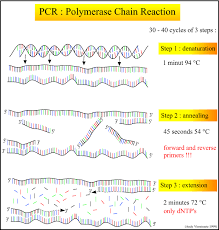
PCR-based detection and identification of viruses assumes a known, relatively stable genome. Unfortunately, high mutation rates may lead to extensive changes in viral nucleic acid sequences making dedicated PCR primer use problematic. Furthermore, in bioterrorism, viral consensus sequences can be genetically modified as a countermeasure to RT-PCR and DNA chip detection. Accordingly, there is a great need for the development of rapid and universal virus detection and identification technologies.
Relatively benign viruses can be converted into highly virulent viruses via the introduction of genes of interest. For example, Ectromelia virus, a natural pathogen of mice that causes mousepox, recently was recombined with interleukin-4 as part of an effort to develop a live virus immuno-contraceptive vaccine. Surprisingly, the recombined virus caused 60% mortality in 2 strains of mice, whereas the wild type virus caused no death [1]. A credible bioterrorism scenario might entail the release of such a recombined or chimeric virus tailored for maximum infectivity and pathogenicity but not readily detectable using our current "state-of-the-art" diagnostics (i.e., PCR and micro-array chips.) Accordingly, there is a need for methods that can identify unknown viral pathogens and which can reveal extensive genomic information. Such methods would not only prove useful for our defense against bioterrorism, but also would improve our capacities to identify and control outbreaks of naturally occurring pathogenic viruses.
RNA Arbitrarily Primed PCR [RAP-PCR] [6-8]). The amplicons range in size from ~50–600 bp and overlap. RAP-PCR was recently used successfully to identify a novel human pneumovirus only after the virus had been cultured [9]. These techniques yield an amplicon "fingerprint" and are generally used to compare two populations of nucleic acids
This example highlights the superiority of PCR over other currently available methods. DNA chips that allow the simultaneous measurement of literally thousands of genes through hybridization are now being developed as the next-generation rapid diagnostic test for all known human pathogens [4]. However, both of these technologies rely on a relatively stable genome, and several human pathogens display a high mutation rate
Results
We report herein that viral genomic DNA or RNA can be separated from host nucleic acids in plasma by filtration and nuclease digestion, and randomly amplified in a single PCR using a mixture of primers designed to be resistant to primer-dimer amplification (5'-VVVVVVVVAA-3', V = A, G or C; 38 or 6561 primers). We have termed this novel PCR method Random Multiplex (RT)-PCR since hundreds of overlapping PCR amplifications occur simultaneously. Using this method, we have successfullydetected and partially sequenced 3 separate viruses in human plasma without using virus-specific reagents (i.e., Adenovirus Type 17, Coxsackievirus A7, and Respiratory Syncytial Virus B). The method is sensitive to ~1000 genome equivalents/ml and may represent the fastest means of detection of unknown viruses.
No comments:
Post a Comment